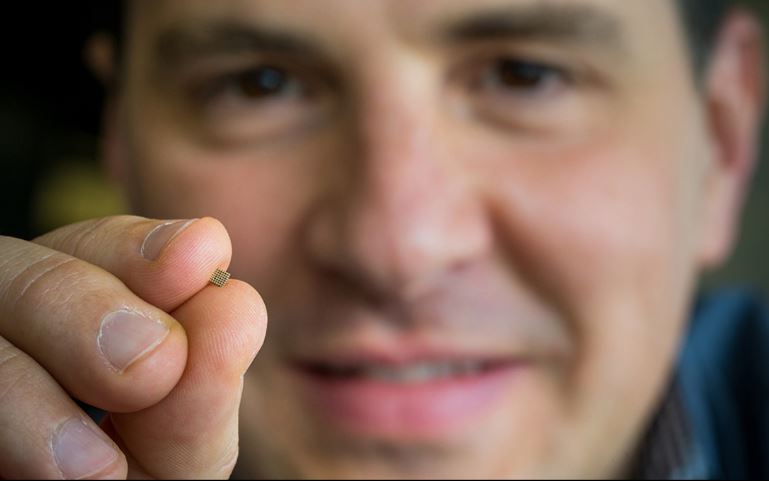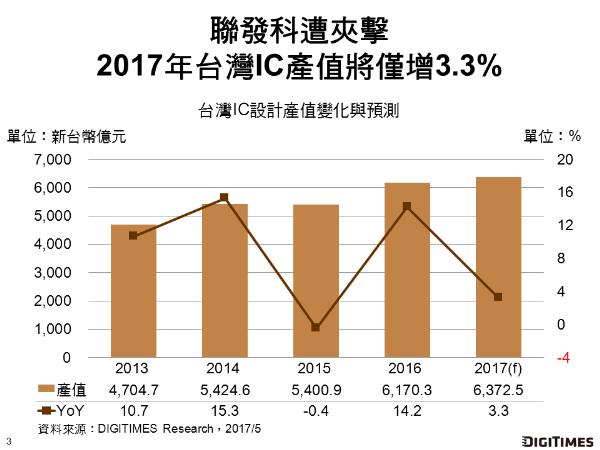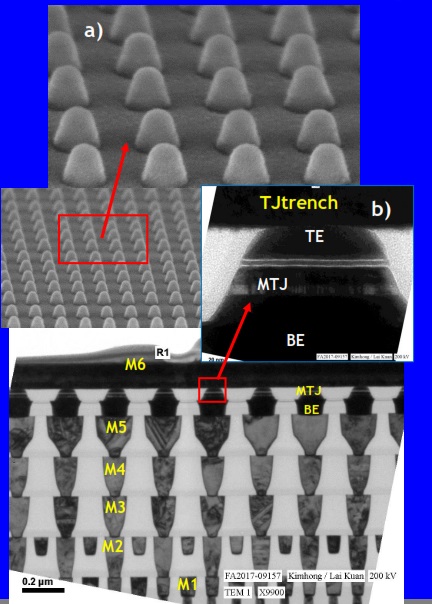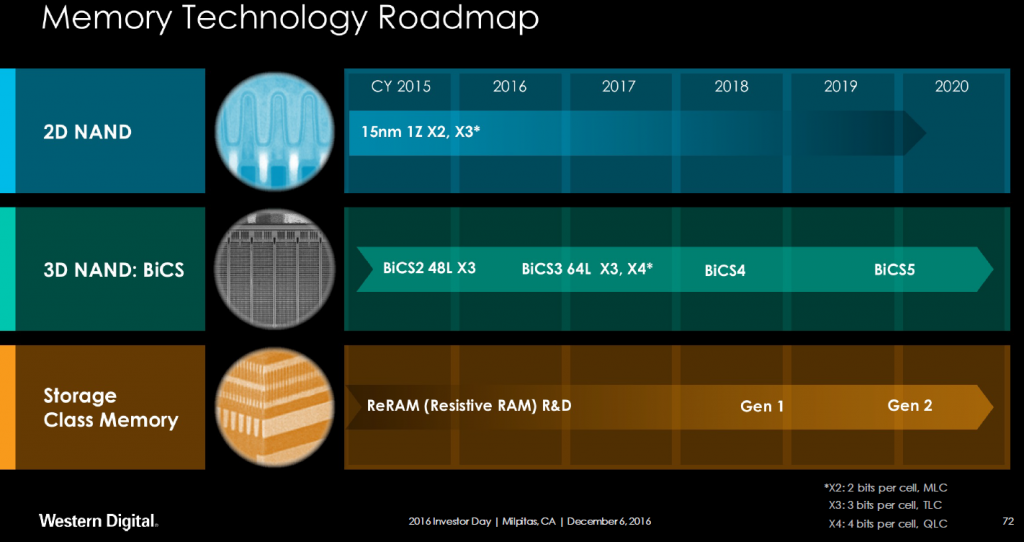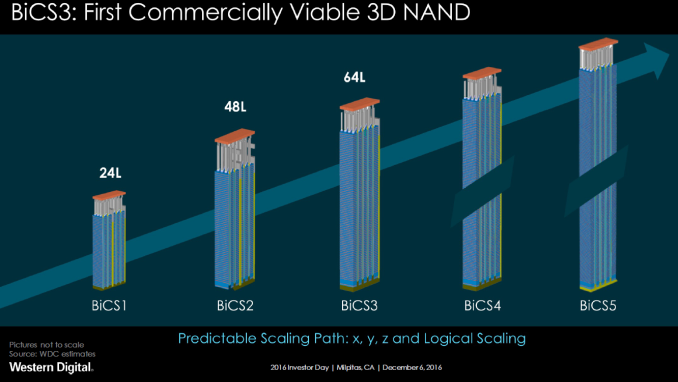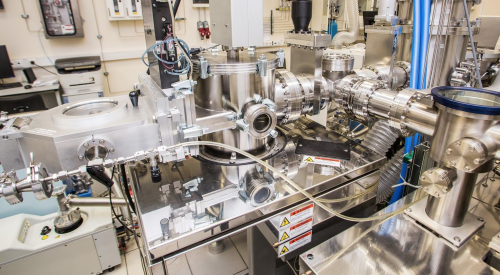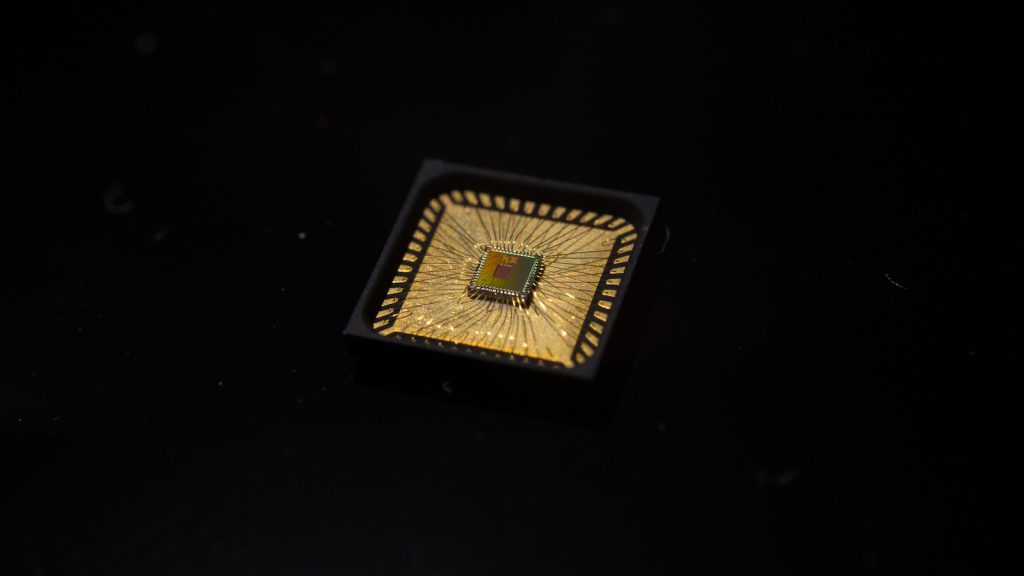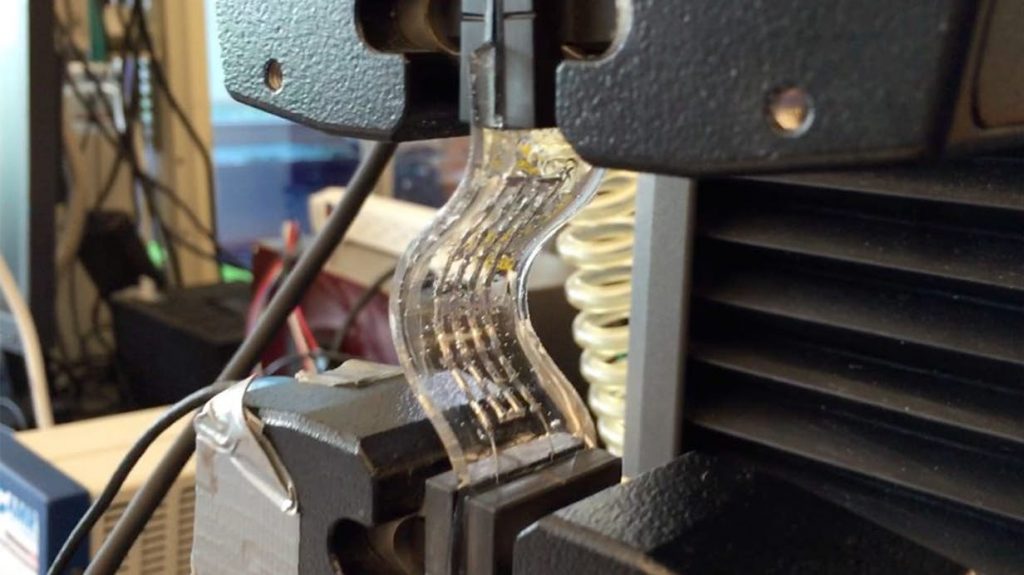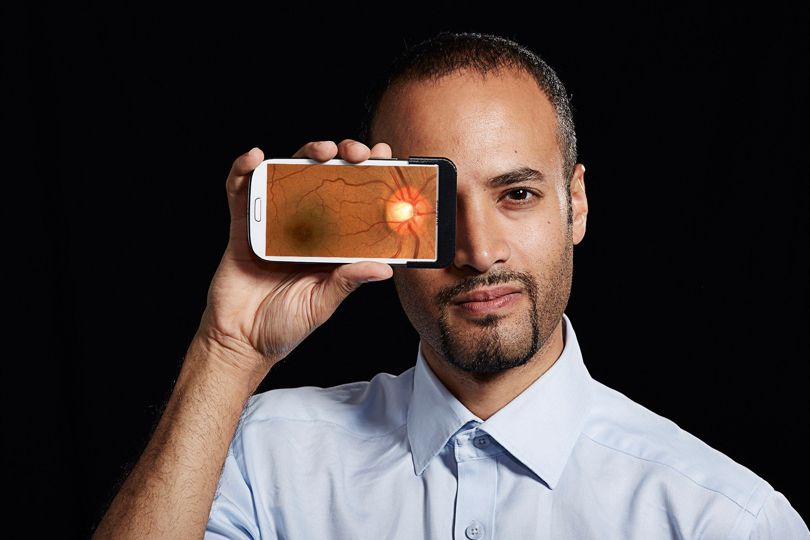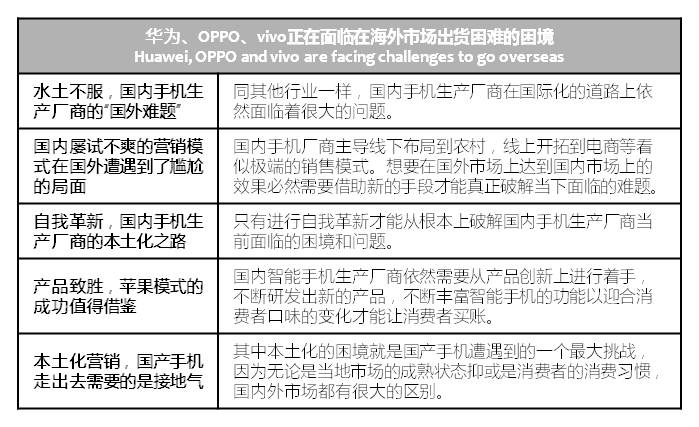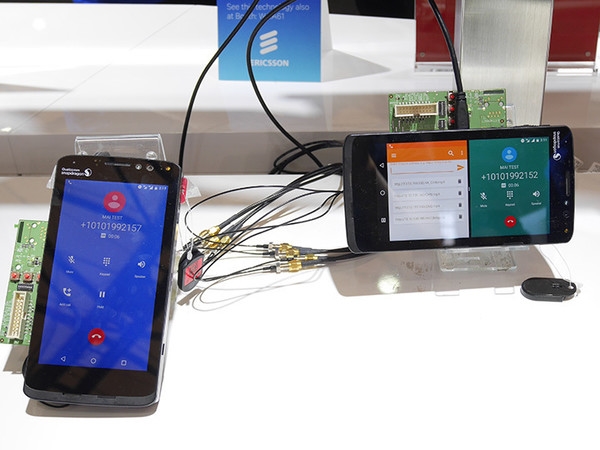
07-02: Qualcomm has showcased its dual-SIM dual VoLTE solution with Snapdragon 835 platform; Sharp plans to spend about JPY57.4B (USD515M) to build production lines for OLEDs at its plants; etc.
Chipsets
Microsoft Research announced a new project that embeds artificial intelligence onto bread-crumb size computer processors. This project is called Embedded Learning Library (ELL) and it will help developers build and deploy machine-learned pipelines onto embedded platforms including Raspberry Pis, Arduinos, Micro:bits, and other microcontrollers. (Laoyaoba, ZDNet, MS Poweruser)
The production value of Taiwan’s IC design industry will grow only 3.3% on year to NTD637.3B (USD20.9B) in 2017, as a result of weaker growth coming from MediaTek, according to Digitimes Research. Taiwan’s IC design industry output value displayed a larger 14.2% increase in 2016, said Digitimes Research. (Digitimes, press, Digitimes)
Qualcomm has showcased its dual-SIM dual VoLTE solution with Snapdragon 835 platform, in collaboration with China Mobile. (CN Beta, My Drivers)
Strong radio-frequency (RF) component demand will buoy sales at suppliers including Richwave Technology, Rafael Microelectronics and AMIC Communication (AMICCOM) in 2017, which are expected to increase 10%-20% on year, according to Digitimes. Airoha Technology, a subsidiary of MediaTek specializing in wireless communication ICs, will also benefit from robust RF chip demand and see its 2017 revenues increase up to 20%, said the sources. (Laoyaoba, Digitimes, press)
Currently Mainland China foundry production capacity is ranked top 2 globally, with 15% market share in 2017. In China there are 51 IC production lines totally, located in Beijing, Shanghai, Tianjin, Xi’an, Xiamen, Hefei, etc. In the future, 12” foundry fab production lines from SMIC, HLMC, TSMC, Leadcore, Nexchip, Alpha and Omega Semiconductor (AOS), Tacoma, and Tsinghua, in addition to 8” fab expansion from Tacoma, SMIC, Silan and Silex, China’s market share in foundry segment will increase rapidly. (Laoyaoba, China Times, EE World)
One of leading reticles and photomasks manufacturers Taiwan Mask Corp (TMC) is led by new chairman Wu Guojing from Browave. Mr. Wu indicates that photomask industry is growing well. Mainland China is aggressively developing its semiconductor industry, and expects to build 40 additional foundry fabs. Thus, reticles and photomasks are definitely needed. Currently there is only one of those fabs in China. (CNA, UDN, Laoyaoba)
Touch Display
Taiwan’s knowledge-based startup INT Tech and LCD driver IC maker UltraChip have set up a joint venture, Ultra Display, which will focus on development of driver ICs for AMOLED panels. Ultra Display aims to start sampling its first IC by the end of 2017, and start commercial production in 2018. (Digitimes, press, OLED-Info, CNYES)
Sharp plans to develop large organic electroluminescence display panels — a thin, bendable light-emitting technology — for TV sets. Sharp plans to spend about JPY57.4B (USD515M) to build production lines for OLEDs at its plants in the city of Sakai, Osaka Prefecture, and in the town of Taki, Mie Prefecture. The new production lines are expected to go into operation in Apr~Jun 2018. (Gizmo China, Japan Times, Sina, iKanchai)
Japan Display Inc (JDI) announced development of an integrated console display for automotive applications. This Pixel Eyes display features seamless cover glass and integrated peripheral touch controls around the display. In this 10.2” Pixel EyesTM product, a single IC controls both the active area touch functions and the peripheral touch controls around the display. (JDI, Laoyaoba)
Samsung is reportedly planning to strengthen its business for OLEDs that are used for monitors or laptops. Recently Japan’s JOLED started producing small and medium-sized monitors for experts through a high-tech process technology called inkjet printing method and this has Samsung Electronics deeply think about possible countermeasures. (Laoyaoba, Sohu, Digitimes, EE World, ET News)
Camera
Digitimes Research estimates that penetration of dual-camera equipped smartphone will reach 30% by 2018, and 50% by 2019. Largan Precision, Kantatsu (lens), and Sunny Optical (camera module) are planning to expand production. Digitimes Research realizes that after Largan expand its lens production, it will be 1.7 times of Genius Electronic Optical (GSEO). (Laoyaoba, China Times)
Memory
Toshiba has reportedly picked a consortium led by a Japanese government-backed fund as a preferred bidder for its prized memory chip business. The preferred consortium includes the Innovation Network Corporation of Japan (INCJ) fund, private equity group Bain Capital and the Development Bank of Japan. (CNA, Laoyaoba, Bloomberg, Financial Times)
On the heels of several foundries publicly announcing plans to put MRAM into production by the end of this year and into 2018, Globalfoundries discussed Everspin Technologies’ progress with moving embedded MRAM (eMRAM) forward into the 22nm process node. (Laoyaoba, EE Times, ET Taiwan)
Western Digital announced its 4th-generation 3D NAND memory, developed as part of the Western Digital / Toshiba joint venture. It features 96 layers and will include several capacity points and will use TLC and QLC architectures. The company expects to start volume production of BiCS4 chips in 2018. (AnandTech, Western Digital, Laoyaoba)
Moscow Institute of Physics and Technology (MIPT) says it has reengineered its Resistive random-access memories (ReRAM) process to achieve a thin-film technique that is amenable to 3D stacking. (EE Times, Sohu)
With the applications expanding, system support built-in memory capacity is getting bigger, semiconductor silicon wafer, epitaxial and memory products are in hot demand, which causing shortage in supply in 2017. The costs of these components are expect to increase in 2H17. (UDN, Laoyaoba)
Sensory
Samsung has filed a patent for magnetic VR hand controllers. The patent details “a method of controlling an electronic device, the method includes, based on a magnetic field generated by a source, obtaining a coordinate of a user’s hand; and reflecting the obtained coordinate of the user’s hand in a virtual reality environment based on a change of a location of the source due to a movement of the user.” (Laoyaoba, Upload VR, USPTO)
Founded in 1998 in Hamburg, Germany, Ibeo is a main Light Detection and Ranging (LiDAR) sensor manufacturer, mainly targeting sensors system and environmental recognition. In 2000, it is acquired by industrial sensor manufacturer SICK. In 2009, it was acquired by management, and becoming an independent company again. (Laoyaoba, Digitimes, EE World)
University of California San Diego has developed a temperature sensor that runs on only 113 picowatts of power — 628 times lower power than the state of the art and about 10B times smaller than a watt. This “near-zero-power” temperature sensor could extend the battery life of wearable or implantable devices. (Engadget, Nature, UCSD)
Battery
North Carolina State University has developed a system using liquid metal components, making it flexible, efficient and even self-healing. Thermoelectric (heat-harvesting) devices come in all kinds of form factors, including smartwatches, wristbands, t-shirt patches, pockets and flashlights. (CN Beta, Science Daily, New Atlas)
Connectivity
The Chinese telecom equipment manufacturer ZTE is planning to double its 5G research spending for 2017 and beyond to reach the top of the industry. ZTE revealed that it had already invested CNY1B in this project in 2016. For this year, it intends to double that amount to CNY2B (USD295 .5M). (Android Headlines, Reuters, CN Beta)
Smartphones
CK Lu, research director at Gartner shares his insight about the future of smartphone competition, including 5G technology, artificial intelligence (AI) and behavioral biometrics on smartphones, and impact of the royalty dispute between Apple and Qualcomm on the Chinese smartphone ecosystem. Gartner expects that initial 5G network deployments will focus on islands of deployments and mobile usage is not seen as the primary use case for 5G in the early years. In 2021, we expect total sales of 5G-enabled phones to reach around 90M units globally. (Gartner, Laoyaoba, EEPW)
According to ophthalmologist Andrew Bastawrous who was quoted as saying, “Many more people are becoming shortsighted than they were a decade ago. The implications of this are not just that there are more people needing glasses, but that their condition is pathological.” The initial theory for this is that people are doing more near-plane reading activity with smartphones which is encouraging the eye to become myopic to meet that environmental need. (Ubergizmo, Wired)
Wistron’s subsidy Wiwynn and Quanta’s subsidy Quanta Cloud Technology (QCT) have showcased their AI servers. Wiwynn is using PCIe standard “Just a Bunch of GPUs” (JOBG), targeting current AI servers upgrade. In 2017 NVIDIA is paying attention on QCT, because the latter is not only an ODM for Google, Facebook, and Microsoft servers, but also trying to compete with Dell and HPU on cloud server business. (Laoyaoba, Sohu, TechNews)
Chinese nationals spend an average of 3 hours a day on their smartphones, ranking second in the world after Brazilians who spend 5 hours on their phones, according to a survey by a German internet company. People in the United States, Italy, Spain, South Korea, Canada, and the United Kingdom spend more than 2 hours a day on their mobile devices. (Global Times, ECNS, CN Beta)
Huawei, OPPO and vivo have reportedly yet found a viable strategy to mimic their domestic growth in the United States, Europe, and many other Western markets. (My Drivers, Lanjing TMT, article, Android Headlines, Pocket Now)
